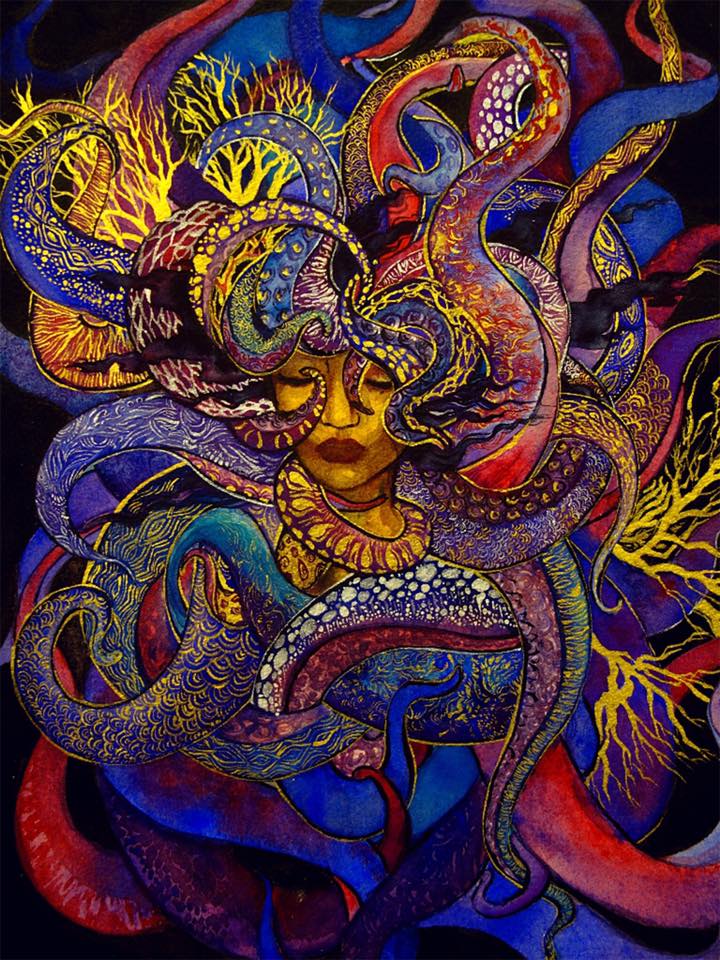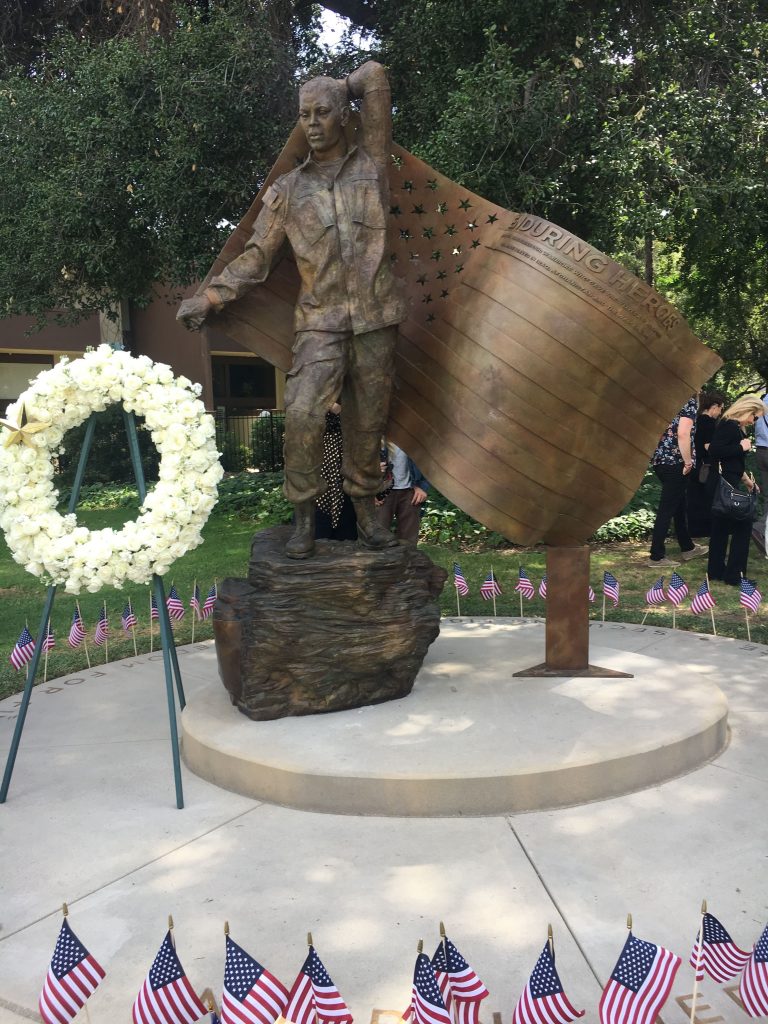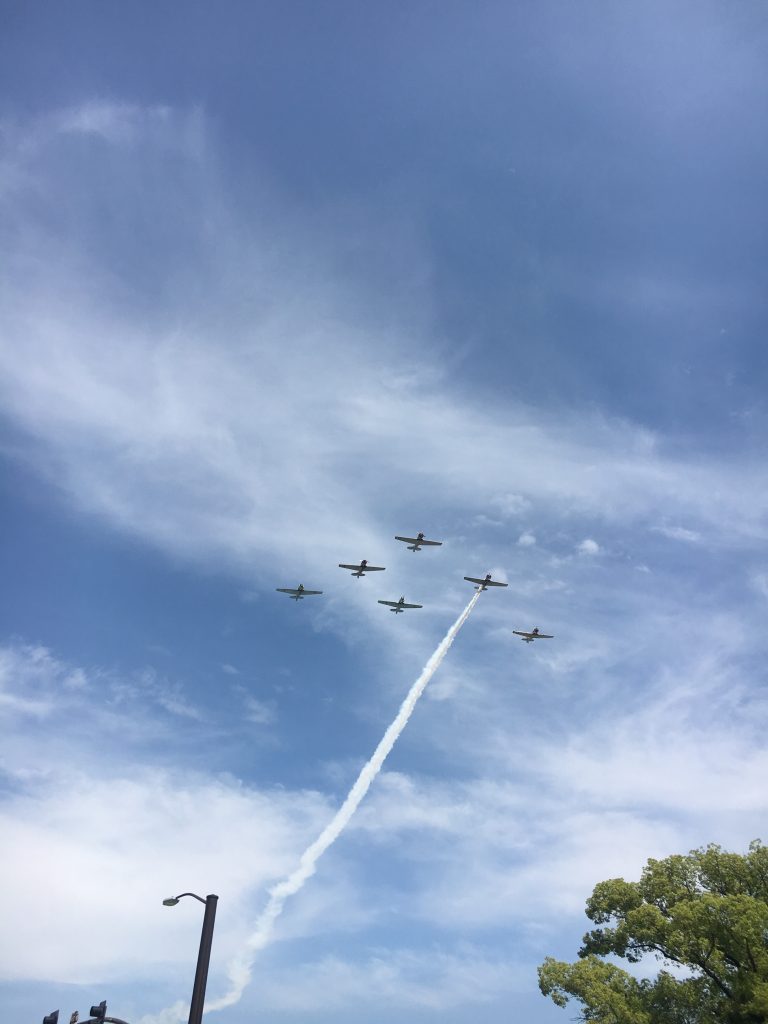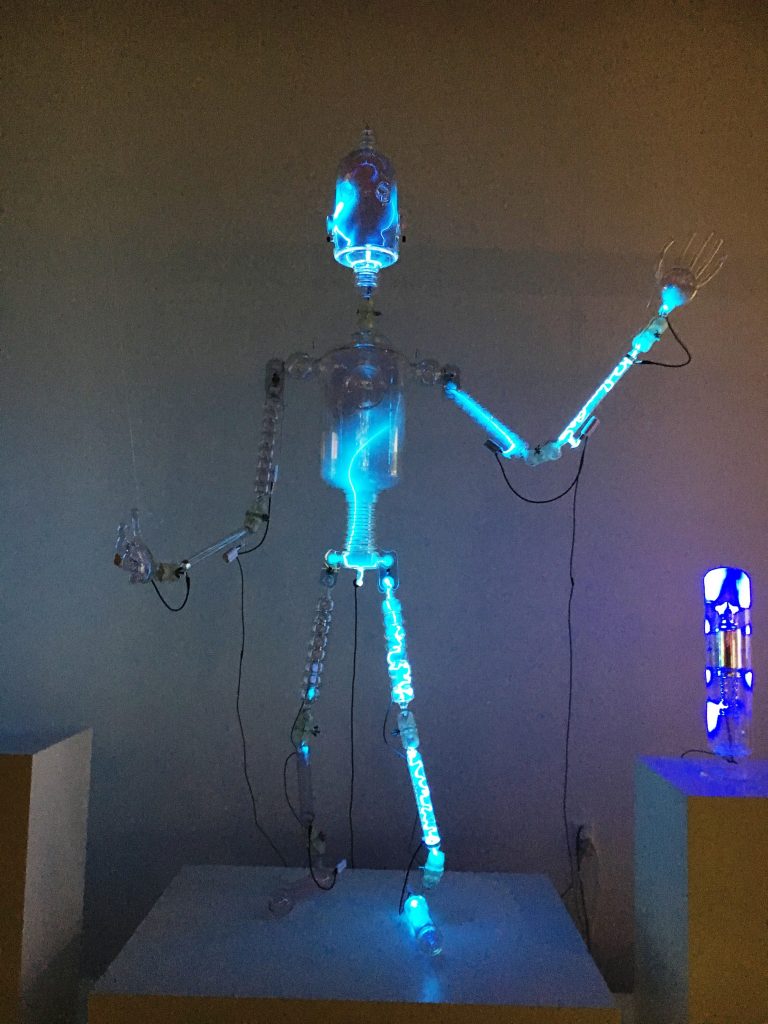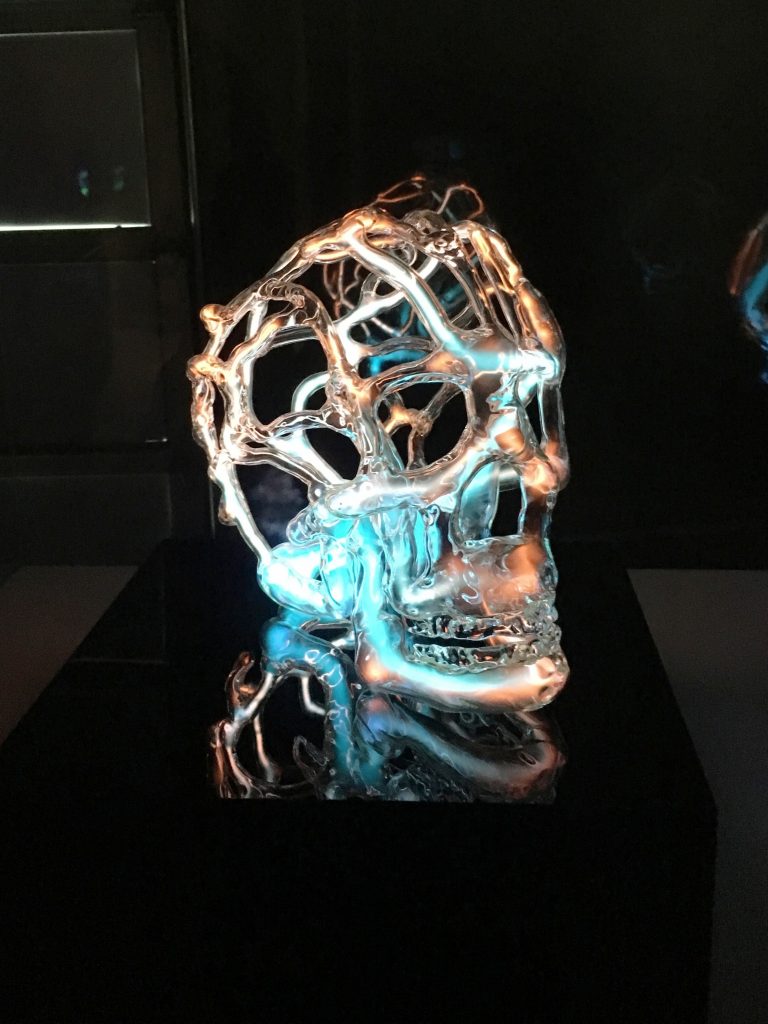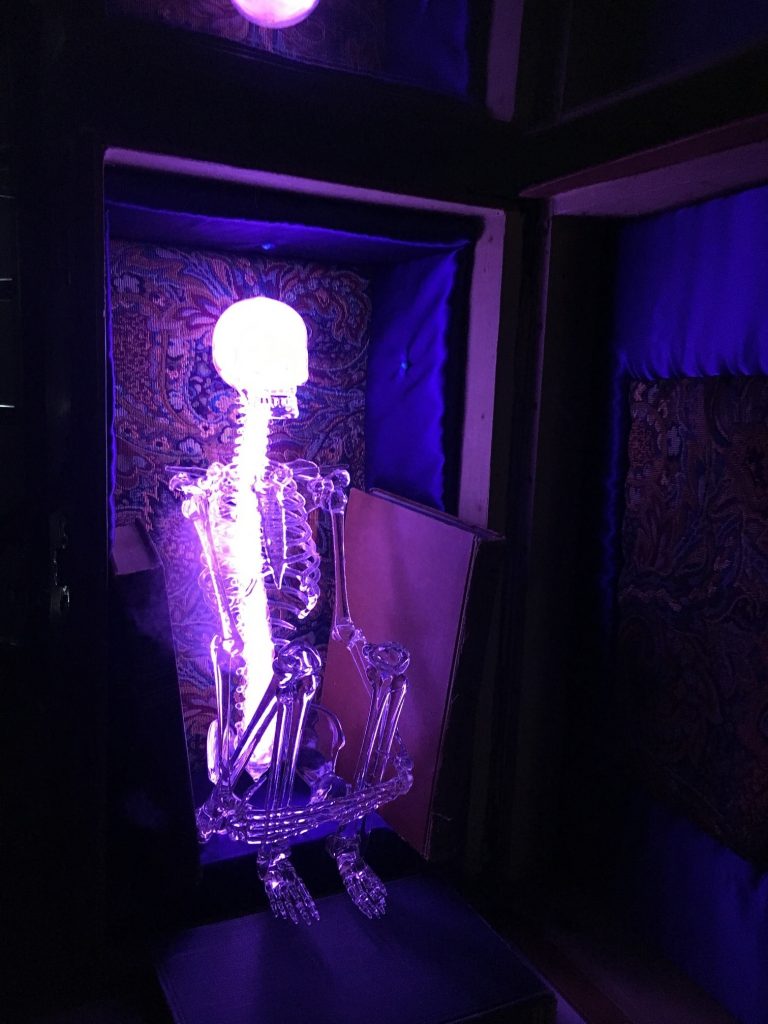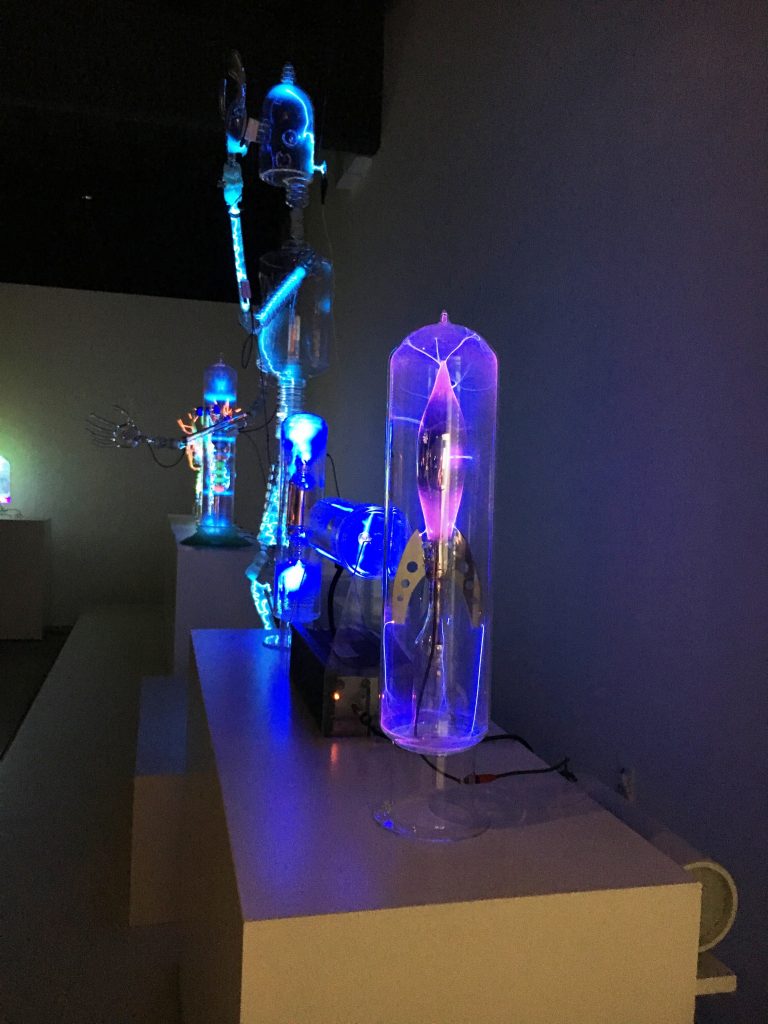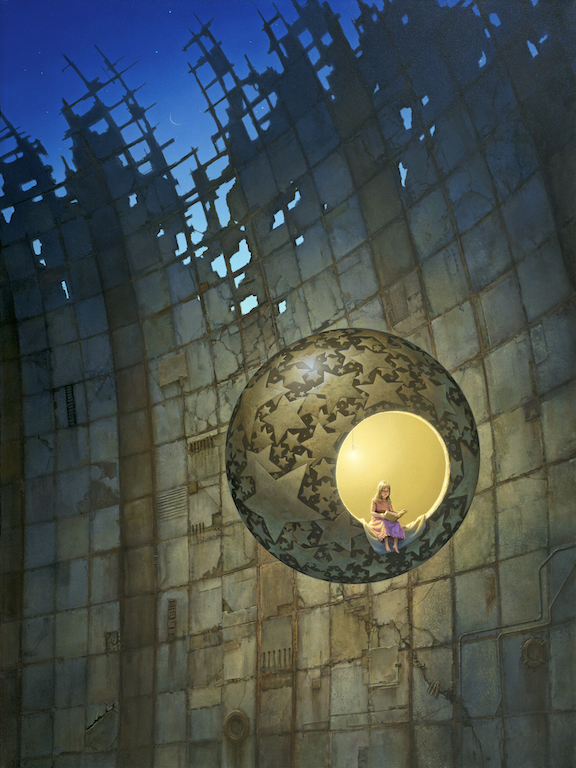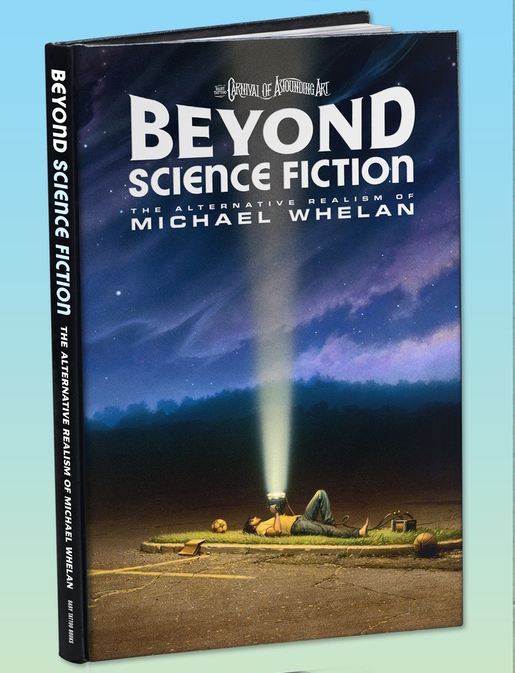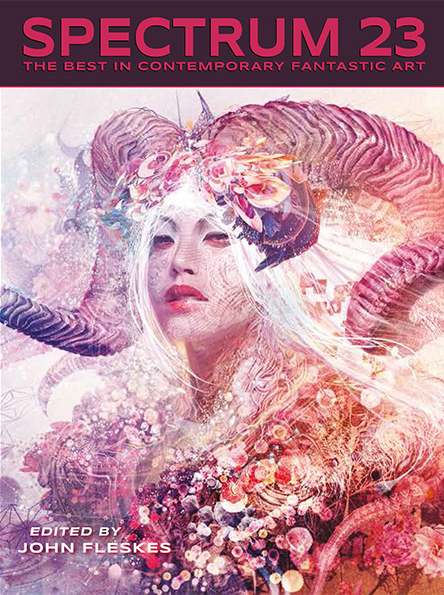[Editor’s introduction: Likhain is a Filipina artist and writer from Manila who now lives in rural Australia with her partner. And she is a 2017 Hugo nominee for Best Fan Artist. The guest of honor speech she gave this weekend at the Australian National Convention is posted here by permission.]
Thank you all for coming; I’m privileged to be here before you today. To begin I would like to acknowledge the Wurundjeri people of the Kulin nation, the traditional custodians and caretakers of the land on which we meet, and to pay my respect to all elders past and present.
Today I’d like to tell you three stories, in the hopes that they speak to you. And this is the first story:
I was sixteen when I learned that I was born to be a villain.
At this point I was a voracious reader of fantasy and science fiction; I’d been scolded several times in class for reading David Eddings instead of taking notes; I’d done the whole “hide novel inside larger textbook” thing. And I was very happy; I had epic stories and interesting characters and amazing worlds to explore. I did not feel any sort of lack.
This began to change on my third — maybe fourth — reread of Tolkien’s Lord of the Rings. I was deep in the third book, I think, reading about the histories of Numenor, with Tolkien’s sonorous phrasing resonating in my mind; these fair and grave lords of men, tall and gray-eyed; the fair elves, with their flawless faces and graceful ways; and my two favorite characters, both surpassingly fair, Eowyn the White Lady of Rohan and Arwen Undomiel the Evenstar.
That time I paused and was struck with the realization that there was no way I could ever be like any of them — not the Numenoreans or elves, not Eowyn or Arwen. I was not one of those who could have joined the Fellowship, or who could have fought with Rohan or Gondor’s armies.
I was on the other side. I was an Easterling. Or I was a Southron, one of the Haradrim. One of the bad guys. The barbarians. One of the nameless, faceless villains in their dark hordes.
It is not only that I was not fair. This went deeper than skin, because it was tied to history, to sociopolitics, to where my country was situated in relation to the rest of the world. To cultural imperialism and language and who got to write stories that would be published and read all over the world. Who got to speak; who got to be heard.
In the books I read, it never was me. I was never one of the heroes. At best I was a sidekick, but most of the time I was an exotic slave or part of the armies of evil. I belonged to the countries that were far away and thus didn’t matter; to places that were uncomprehended and therefore savage and hostile, to cultures defined solely by the oppression or brutality of their people.
I did not stop reading fantasy at this point. I read on, even when Daenerys Targaryen emerged to conquer the lands of Essos and that image of her, pale and silver-haired, elevated above a sea of brown bodies, burned itself into my brain. I tried to believe that these things were coincidences, like my white friends assured me. That they meant nothing to me in the real world. I knew this to be a lie, but I swallowed it so I could keep reading the kinds of books I loved.
I’ll tell you now what it felt like. It was being a beggar outside a feast, nose pressed against the glass, imagining what it must be like to gorge oneself on all that delicious food. It was hunger that would never go away.
It was acceptance that this was how the white West saw me and people like me. It was a sort of cognizance that this was the way that literature, and indeed the rest of the world, worked. And it was, in the end, a kind of resignation. Yes, I was a beggar, but better to be on the outskirts of the feast than to never know that such food existed at all.
Why am I telling you this? I want you to see where I’m coming from. That for me — and for many others — being part of fandom, loving stories of fantasy and science fiction and horror and all the marvelous genres in between, is not a neutral or bloodless act. That this comes with a price more than time or opportunity or money. That some of us pay this price more often or more painfully than others, not by choice but by necessity.
Stories can cause such harm they make one hate one’s skin and people and history; they can justify one’s cruelty to oneself and one’s fellows because you’re all less human, anyway. They can say, with a terrible finality, no. You cannot aspire to respect or dignity, much less heroism. You cannot do great things.
My second story is this: I was twenty-four when I learned that my people understood beauty.
I knew very little about my country’s history before the colonizers came. The Philippines was colonized by Spain for three centuries, and during that time the Spanish sought to scour all traces of pre-existing culture from my country. They did a thorough job of it; not much survived, and of what was left most people know very little.
So my history only glanced briefly at what came before the Spanish colonial period. What came before was murky and dark. I have encountered something like that here; the untruth, embedded in so many structures, of terra nullius, where nothing existed before settlers came to birth Australia from this land’s unwilling womb. It’s a prevalent story, and one that’s easy to sell; we started with nothing, we brought civilization here and built this country from the ground up. Look at this arrow of progress.
Because I knew little I grew up with the subconscious belief — and I say subconscious because if you had asked me I would have denied it, for all that it clung to my spine — that my ancestors were primitive savages who knew nothing of literature, or music, or art. That our conquerors had elevated us to a civilized state in exchange for our land, our freedom, and our blood.
Then I went with my partner to an exhibit at Ayala Museum in the Philippines called “Gold of Ancestorsâ€. It featured gold pieces from pre-Hispanic times that had been excavated from all over the Philippines, and it blew everything wide open.
Have you ever stood in the middle of a museum floor, hands pressed to your face, trying not to weep aloud? I have. My assumptions of primitive savagery shattered all around me; the depth of my ignorance hit me like a blow. How could I have thought that my ancestors had no imagination or skill? That they had no artistry or the faintest concept of beauty? How could I have bought into the terrible idea that they were savage? How could I have believed that before, there was nothing? In that exhibit I saw jewelry from the 14th century that was so intricately detailed I couldn’t imagine how anyone could have done it by hand. And yet my people had.
This was where my art truly began. Until this moment I worked on ink drawings inspired by Japanese kimono textiles and Baroque and Rococo styles, heavily flavored with the fairy tale aesthetic of illustrators like Arthur Rackham. I did my art that way because this is what I admired and knew, while being conscious that it wasn’t fully mine. It didn’t emerge out of my roots or history; but that was understood because my culture didn’t have anything of our own that wasn’t externally imposed.
But this– this was something that belonged fully to me and to which I belonged fully. This, too, was a story, because everything in that exhibit was part of a narrative that spoke of artistry where I thought I’d find clumsy handiwork; glorious existence where I’d only known void. This was a story that gave me a foundation I could build upon.
And so I did.
Stories can also heal us. They can close up gaping wounds we don’t even know we bear. They can lift us up and say, Yes. Move forward. Through stories we can reclaim histories that have been stolen from us, even if the theft happened centuries ago. And through that reclamation we can begin to confront the trauma of generations of war and colonization and say: yes, we’ve inherited all this darkness. But we’ve inherited light, too.
My third story is not actually a single story, but a multitude of stories. And so I can only tell you about a few of them, and you can discover the others on your own.
Because my third telling is one about stories of revolution. In my country’s history our revolutions have been fueled by stories; I think all momentous changes are, but especially uprisings against entrenched power. Because how can you persuade people to fight against the current balance of power, if not by telling them a story? That the world doesn’t have to be this way; that the world can change.
Towards the end of the Spanish colonial period in the Philippines, two people told two stories. One, the artist Juan Luna, painted Spoliarium, which won the highest honor in the Madrid Exposition of 1884. This story told people that Filipinos — indios, barbarians, who didn’t know how to create anything before their colonial masters came to their land — were capable of art that surpassed their colonizers.
The second, the polymath Jose Rizal, wrote two novels: Noli Me Tangere and El Filibusterismo. Rizal was killed for these novels; these stories so inflamed Filipinos and so angered Spanish authorities that their author faced execution by firing squad. When I first read these books I was a grumpy high schooler who didn’t see why these books were so incendiary. (Spoiler alert, except it’s not really a spoiler because there are no good endings in Philippine colonial history–) They both end badly, with the Filipino heroes either dying, being defeated, or being imprisoned in a tortuous rapehouse. The second book does involve an attempt at a revolution, but it fails horribly.
I grew to understand, though, that succeeding in the fictional revolution wasn’t the point. The point was that Rizal held up a mirror to the Philippines of his time, and showed people their true faces. He showed the greed and cruelty of the Spanish friars; he showed the arrogance of the Spanish ruling class; he showed the indifference and incompetence of officials both in the government and in the academe; he showed the injustice of the systems of society, damned if you do and damned if you don’t, you’ll be crushed under the machine; he showed the thousand slow deaths — by madness, by starvation, by bullets, by imprisonment, by suicide — that countless Filipinos died under Spanish rule. He showed the sheer impossibility of continuing to live in that world.
This is why this story fanned the flames of revolution. This story told people the truth, and the sheer force of this truth drove people to act. If this is the world we live in, I will fight until this world changes.
For isn’t that the power of stories, at their core? They change worlds. We’re all here because we recognize that. We have all been transformed and shaped and molded by stories. Stories have saved us. They have made us laugh and weep; they have moved us to the depths of our being; they have driven us to make difficult choices and they have fortified us through our darkest times. For many of us, they have affirmed our existence and our right to live. We here are all children of stories.
And we hold on to this — now, more than ever. These are terrible times for so many people all around the world. In my country over seven thousand people have been killed in the past nine months, all in the name of a war on drugs. You don’t need me to tell you about how terrible Australia is right now for so many, especially refugees, Indigenous people, and homeless people; or the wars and killings and terrorism attacks all over the world, with countless people forced to flee for their lives, or having to try to fight politicians who are determined to legislate them to their deaths.
And it’s hard to think about what we can do in the face of so much darkness and horror. But we can act. For this is the world we live in — fight until it changes.
We can take back the stories. Refute the narrative of hatred and despair. In our actions, in our speech, in our connections with others — we can write our own stories. We can overwrite xenophobia and racism with the truer story, that is compassion and a shared humanity. We can shout back at the blaring tale of hateful patriarchy with our defiant resolve to own our agency. We can drown out bigotry and the countless false stories that seek to divide us from each other with our collective story, that stitched together tale-within-a-tale of a community whose members believe that we are not free until we are all free. We can speak up and speak out for the stories stifled by oppressive structures and imbalances of power; we can say these stories have a right to be heard. We can tell, in our daily lives, the story of the person who planted themselves like a tree by the river of truth and told the overwhelming tide of falseness, “No, you move.”
And going back to my first story — in our fannish space, as creators and fans, we can change the stories that populate our shared worlds of imagination so that they stop exacting such a toll on people’s lives and hearts and do not perpetuate further harm. We can support and nourish stories of reclamation, as with the gold exhibit: to bring people who have been severed from their cultures back to themselves; to center those who have long been shunted off to the margins; to give people who have long been boxed in by toxic narratives the space and freedom to live full lives instead of stereotypes. We can make more space for stories that say: yes! Go and live. Your life matters.
This isn’t about political correctness or diversity quotas or agendas. This is about justice. Because we live in an unjust world, where only certain people are allowed to tell stories — are allowed to even have stories. Shouldn’t we change that? Shouldn’t everyone be given the chance to believe that they, too, can do great things; that they, too, exist, that they matter?
We know how powerful stories can be. We’ve seen the difference they can make, revealing us to ourselves so that we may act upon those illuminated truths. I ask that we fight, we children of story, to change the stories within us and without us. In our homes and communities and societies and in the quiet spaces of our bodies. We cannot let our stories, these stories of our identities and our histories and our roots, fall silent. Silence is death, and stories support and undergird life.
I’m going to end with a surprise fourth story. This is not mine; it’s by Italo Calvino, towards the end of his beautiful book Invisible Cities, where Kublai Khan is speaking out of despair:
Already the Great Khan was leafing through his atlas, over the maps of the cities that menace in nightmares and maledictions…
He said: “It is all useless, if the last landing place can only be the infernal city, and it is there that, in ever-narrowing circles, the current is drawing us.”
And Polo said: “The inferno of the living is not something that will be; if there is one, it is what is already here, the inferno where we live every day, that we form by being together. There are two ways to escape suffering it. The first is easy for many: accept the inferno and become such a part of it that you can no longer see it. The second is risky and demands constant vigilance and apprehension: seek and learn to recognize who and what, in the midst of the inferno, are not inferno, then make them endure, give them space.”
That is the core of our work going forward: make them endure, give them space. Hold fast. Uplift our true stories.
Thank you for your time. Maraming salamat po. Mabuhay tayong lahat.

